
Contact

Home
Loch Ness Monster part 11

1934

continued
Wit and Humour
The Explanation
Chronicle (Adelaide, SA)
Date: March 15, 1934
Page Number: 67
Mrs. Skinflint eyes the box of kippers carefully. "What's your kippers a pair?" she enquired.
"Threepence," answered the fish monger.
"My word, they're small for that price," commented the lady.
"Well, yer see, Mrs.," was the reply, "they come from Loch Fyne, not Loch Ness!"

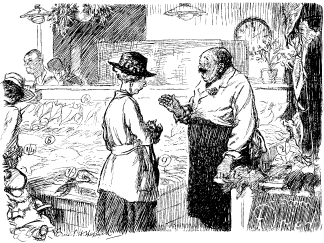
CORRESPONDENCE.
ROADS.
Cairns Post (Qld.)
Date: March 22, 1934
Page Number: 9
(To the Editor "Cairns Post.")
Sir,—Some time, ago I read in your estimable paper correspondence of a man who said that instead of making the Millaa Millaa road it would be better to finish the Japoon road. I would be pleased to call the public attention to the fact that is a good thing to make both roads, but before making the same it would be a lot better to put some loads of sand on, and to make the footpath alongside Owen-street between Edith-street and Grace-street. This portion of Owen street is in the heart of Innisfail, and for a town that is called the "two million town" it is very indecent to have a street like that, that is a sea of mud, and during the night when the light is not on there is a danger of slipping on the swamp and probably meeting the Loch Ness monster. We have to pay our rent of 25/_ per week because the house-owners pay their taxes. We ask the Innisfail Shire Council to render such street passable.
Yours, etc.,
"TAXPAYER."
Innisfail, March 19.

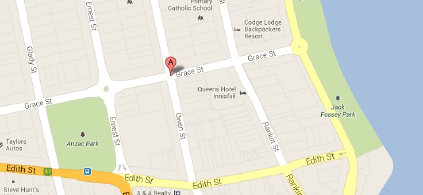

The Central Queensland Herald (Rockhampton, Qld.)
Date: March 22, 1934
Page Number: 16
WHEN it comes to monster stunts of the Loch Ness variety modern Fleet street is simply not in it even with seventeeth century chroniclers. Attention has been directed to a book called the Travels of Evliya Effendi who seems to have been a sort of Turkish Marco Polo. This writer solemnly records the adventure of an Arab diver, who went after pearls in the sea near Massowa. He was swallowed whole by an outsize in crocodiles, but, quite undaunted, pro- ceeded to cut his way out of the unpleasant interior with his knife. Just as he was about to make a good get away, by one of those unlucky coincidences of which travellers' tales are are full, both crocodile and Arab diver were, at one gulp, bolted by "another larger monster." Even that did not depress the Arab. With a pertinacity worthy of little Eric, he carved a way out of the outer monster, and lived to shipwreck his repu tation as a moderately truthful citizen by telling the story.


VANISHED MONSTER
Opposition to Loch Ness Charabanc Invasion
Sunday Times (Perth, WA)
Date: March 25, 1934
Page Number: 16 S
Although the Loch Ness Monster has vanished from its usual haunts, its fame is td be fully exploited when the holiday season opens.
It is announced that over 60 bus companies in England and Scotland have applied to be allowed to run tours to Inverness-shire in the summer.
The County Councils, having failed in their attempt to have these tours prohibited on the grounds of Sunday observance, are now expected to oppose them on the grounds that the nothern roads are not suitable for such heavy bus traffic.

THE ELUSIVE MONSTER OF LOCH NESS.
What it May Be.
Bunyip (Gawler, SA)
Date: March 23, 1934
Page Number: 5
Capable of Living on Land or in Water.
By the Right Rev. D. O. Hunter-Blair, O.S.B. (from the "Universe.")
Let me say at once that by the above headline I do not intend for a moment to imply that I entertain the slightest doubt as to the real and objective existence of a strange and unknown beast in the profundity of the great loch which I have known intimatey for more than half a century. "Elusive'' he is and must be, as long as it remains unpredictable when or where he will make his appearance in the length and breadth of the vast sheet of water which is his habitat.
But during the autumn weeks which I spent at Fort Augustus, and still more as a result of correspondence since I became, and remain, absolutely convinced, on the testimony of a veritable cloud of credible eye witnesses, which it would be absurd as well as unreasonable to flout or to ignore, that this weird and mysterious creature does really and truly haunt these deep waters, not as a casual visitor, but as a resident—of how long standing who can say.
Since the Editor of the "Universe" asked me to write this, short paper, I have thought it well to confirm the impression, or rather conviction, which I formed a few months ago by communicating with a member of the Fort Augustus community, who enjoys a high and just repute as one intimately acquainted with the habits, language, and folk-lore of the West Highlands, and also, as an antiquarian and archaeologist of high attainments.
I asked for a concise answer to several questions, the first being, has the "monster been actually seen by any members of the Benedictine Community?"
"Yes," he replies, "by four or five (whom he names), independently and on different occasions; also by several of the employees and workmen attached to the Alibey. Two of the elder boys of the Abbey School, and also a clerical student, had likewise seen it."
Two of the most remarkable witnesses are, first, an ex-engineer captain of the Royal Navy, resident at Fort Augustus, a man of high ability, training, and experience, who himself saw the animal, and who has been for months past collecting and sifting all the evidence on the subject ; and, secondly, the owner of Invergarry (the old home of the Macdonells), who was suddenly converted from entire scepticism by watching (with his daughter) the creatures' evolutions and girations in the loch for a continuous period of 40 minutes.
It is perfectly obvious, from the letters of my learned correspondent at Fort Augustus, that he brushes aside as puerile and untenable the absurd theories which have been put forward as to this mysterious visitor to, or rather resident in, Loclh Ness being either a grampus, a lizard, a conger eel, a sea serpent, an upturned boat, an inflated rubber bag, or a lump of seaweed !— all of which he, being a sensible man, dismisses (to use Disraeli's memorable phrase) as merely "the hare-brained chatterings of irresponsible frivolity."
What my friend maintains, after carefully weighing all the available evidence, and giving much thought to the subject, is, briefly, that this strange amphibian belongs to the far-back, but post-glacial period, when the great chain of lakes, Loch Ness, Loch Lochy and Loch Oich, running through the Great Glen of Scotland were still connected with the sea.
These denizens of the deep waters have in the course of ages become fresh water, not salt water, amphibians. This particular specimen, having been (according to the generally accepted theory) disturbed by the recent extensive blastings in connection with the road making around Loch Ness, found its way to the surface, and in the continuous sunshine of the past summer, took a fancy to the upper world, which it apparently still retains, though the summer is long over.
My correspondent believes the animal on all the evidence, to approximate to the type of the Plesiosaurus. Let me record my own belief that it is a true amphibian, capable of living either on land or in water, furnished with lungs as well as gills, with four rudimentary legs or paddles, an extra ordinarily flexible neck, broad shoulders arid a strong, broad, flat tail, capable of violently churning up the water round it.
I hazard the conjecture that it belongs to no existing species, but to the Devonian period, oldest but one in the history of the world, and dating back some hundreds of millions of years.

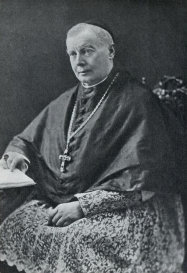
The Argus (Melbourne, Vic.)
Date: March 27, 1934
Page Number: 6
Although several friends of the Rev. James Wright, who arrived from Inverness, Scotland, in the liner Bendigo yesterday are credited with having seen the famous Loch Ness "monster." Mr. Wright remains non-committal on the subject. "They must have seen something," he said, "but what it was I would not like to say." Loch Ness is only six miles from Inverness. Mr Wright, who is a graduate of Edinburgh University, has spent nine years in charge of the Church of Scotland, Inverness He is visiting Australia, accompanied by his wife and son to take up a six months' appointment as minister of Scots Church, Margaret street Sydney.


Rev. James Wright

Scots Church, Sydney
I have little doubt that Hunter Blair's contact at the Abbey was Father Cyril Dieckhoff - enthusiastic researcher of Nessie. The retired
Royal navy captain was possibly Captain Donald Munro who also was a monster hunter. SOURCE
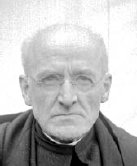
Father Henry Cyril Dieckhoff

Seeking information on Captain Donald Munro
Sir David Hunter-Blair: an able scion of an ancient Scottish noble house who, after a youth spent at Oxford University (where he was
an intimate friend of Oscar Wilde), took vows as a monk and eventually became the second abbot (1912-1917) of the new Benedictine
monastery at Fort Augustus, at the southern end of Loch Ness [below]. Hunter-Blair – or Abbot Oswald, as he was known to his brethren
– spent much of the remainder of his life on the shores of the loch, and was buried there when he died in September 1939. He took
a keen interest in his surroundings, and was a noted believer in the existence of the Loch Ness Monster... Indeed, Hunter-Blair was
personally convinced that the LNM was a surviving dinosaur, and later experienced his own sighting – a rather unusual one, which lasted
for all of 40 minutes, during which "I watched it... gambolling in the deep water and lashing it into a foam with its powerful tail."
...
All of which brings us to March 1935, and a visit Abbot Oswald made to Rome, where he was granted a private audience with
Pius. Abandoning the usual formality, the Pontiff invited Hunter-Blair to sit next to him; the Abbot responded by pulling out some
photos depicting his abbey's beautiful setting on Loch Ness. Seeing these, Pius delightedly exclaimed: "Enfin, nous l'avons – l'habitat
du Monstre!" ("At last we have it – the home of the Monster!") As Hunter-Blair later recorded, it transpired that the Pope had long
been fascinated by tales of the LNM, and made a habit of interrogating any Scottish priests and bishops he encountered for further
information. When he discovered that his visitor actually claimed a sighting of his own, "it proved impossible to steer the conversation
onto any other subject." ...
Mere sidelight on the long and complex history of the Loch Ness Monster though this is, Hunter-Blair's
unexpected Vatican encounter certainly does provide a startling illustration of just how rapidly and widely the legend of the Monster
spread during the 1930s... SOURCE
SCOTS CHURCH PREACHER.
Arrival of Rev. James Wright.
The Sydney Morning Herald (NSW)
Date: March 30, 1934
Page Number: 6
...
Discussing reports that some kind of monster existed in Loch Ness, Mr. Wright said that reputable citizens including doctors and teachers, whom he knew well, had vouched that they had seen it.
...

Berlin Paper Reports Capture of Loch Ness Monster
The Daily News (Perth, WA)
Date: April 2, 1934
Page Number: 9
(Special to "The Daily News")
BERLIN, April 1.
"Captured at last. The Loch Ness monster brought to Edinburgh," announced headlines in the "Berliner Illustrierte Zeitung," a weekly magazine devoted to the more stolid type of pictures of science and exploration. Under the headlines a photograph showed the monster—100ft. long, with a 20-foot tail, weighing 36 tons—being caught in a huge steel net on the shores of Loch Ness, with two tugboats waiting to head the monster back in case it escaped.
Another picture depicts a vast crowd viewing the monster at the Edinburgh Capitol, the lines stating: "American circus proprietors offer £500,000, which is likely to be refused because of scientific reasons."
This, and other equally wild pictures, are published, and the only justification found is the magazine's date line, "April 1."


April Fools' Day
HOW BRITAIN SPENT EASTER
Thousands Look For Loch Ness Monster
The Courier-Mail (Brisbane, Qld.)
Date: April 4, 1934
Page Number: 14
LONDON, April 2.
England's bank holiday attractions included 15 race meetings and 16 point to point meetings, in which 1000 horses competed for £12,000 prize money; and 40 League football matches, the biggest attendance being 50,000 at the Chelsea v Portsmouth match.
About 90,000 people attended London's various museums, and 70,000 visited the zoo. Three thousand motorists vainly searched for the Loch Ness monster, and it is estimated that 3000 cars an hour passed the intersection of the Bath and Staines roads.

BUNYIP MIGRATES
FINDS HOME IN SCOTTISH WATERS.
HIGHLAND ZOOLOGIST RECOGNISES LOCH NESS MONSTER.
Kalgoorlie Miner (WA)
Date: April 5, 1934
Page Number: 3
Acting, perhaps, as an unofficial Empire trade ambassador, the bunyip—that mythical Australian beast on which no sober eye has ever rested—is reported to have forsaken its native mulga swamp for the chill waters of a Scottish loch (says the "Star").
It is claimed by a Scotch zoologist that the bunyip is identical with the strange monster of Loch Ness !
This extraordinary theory is gravely expounded in a recent issue of the Inverness "Peoples' Journal," a Scotch newspaper, with a remark- able knowledge of bunyips and their habits.
The "Peoples' Journal" quotes the statements of a Nairn zoologist, who argues that according to all descriptions, "the Loch Ness monster is none other than a bunyip, the sea-leopard well known to Australians." "The habits and appearance of the bunyip," the article states, "are exactly on a par with those of the present visitor to Highland waters." There follows a detailed description of the bunyip, which Australian bunyip hunters will do well to paste inside their hats :—
Eats Raw Meat.
"Carnivorous in habit, it grows to over 18 ft. in length. Of seal-like shape, it has a long neck and snake-like head. Its eyes are lustrous, and it has a murderous array of teeth.
"Its existence was first proved by Antarctic exploration, and it was later proved that the bunyip left its polar haunts and struck across the tractless (?) ocean until it reached Australian waters."
The Nairn authority on bunyips adds that a number of them might have migrated north and adopted the Arctic regions for colonisation.
But Melbourne zoological circles are not impressed by this ingenious theory.
Origin of Myth.
"It is possible, of course, that the myth of the bunyip had its origin in fact," said the director of the National Museum (Mr. D. J. Mahoney). "Seals and sea-lions have some times been seen far up the Murray, and a stranded specimen may have given rise to the aboriginal myth.
"However, to explain the Loch Ness monster as a bunyip is very similar to the way that Lewis Carroll explained the Snark—"for the Snark was a Boojum, you see!"

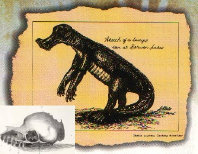
Bunyip
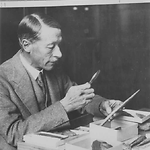
Daniel James Mahony (1878–1944)

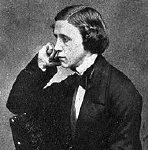
Lewis Carroll
(1832–1898)

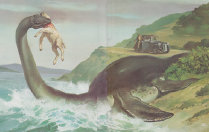
Contents





























